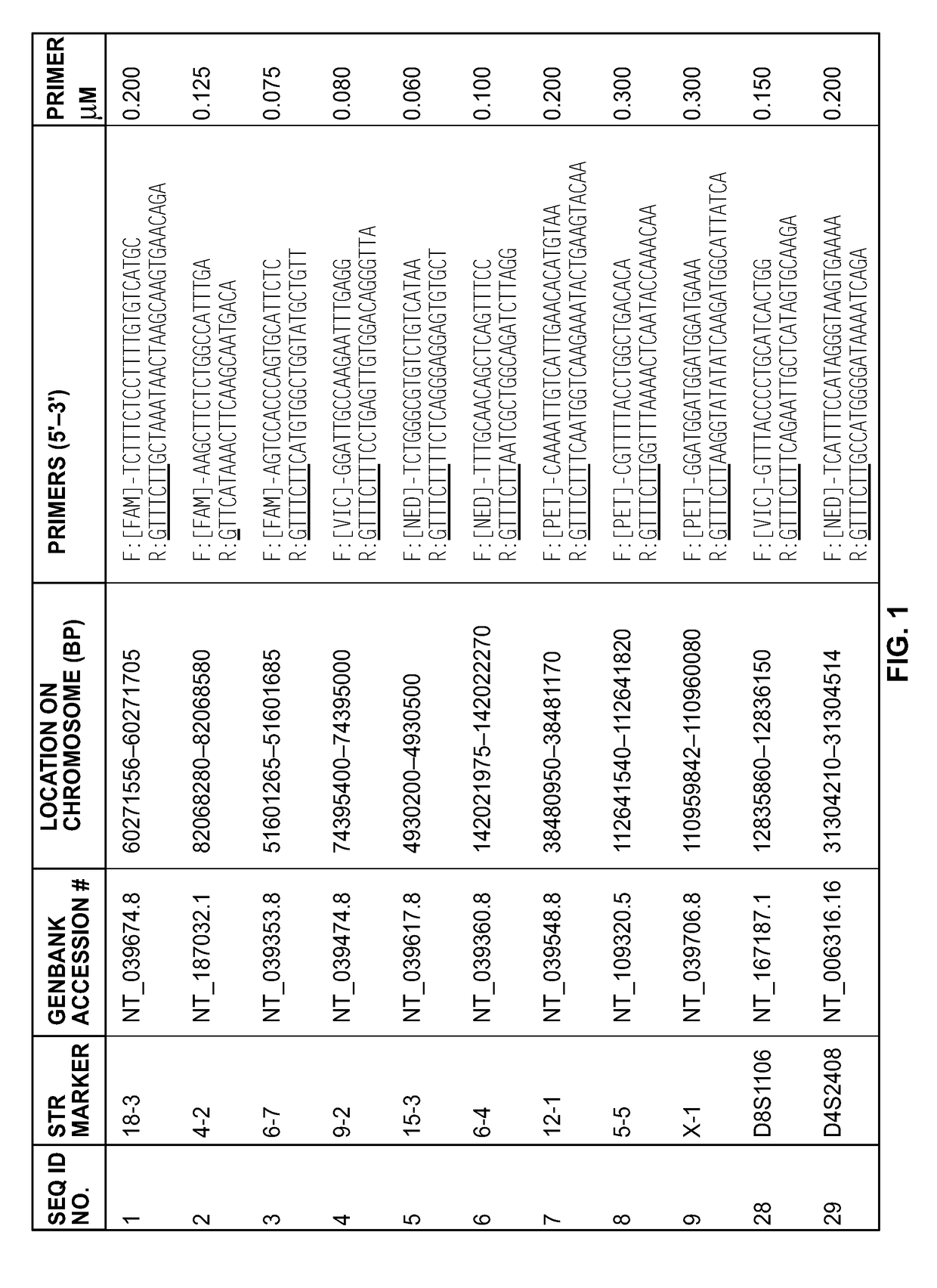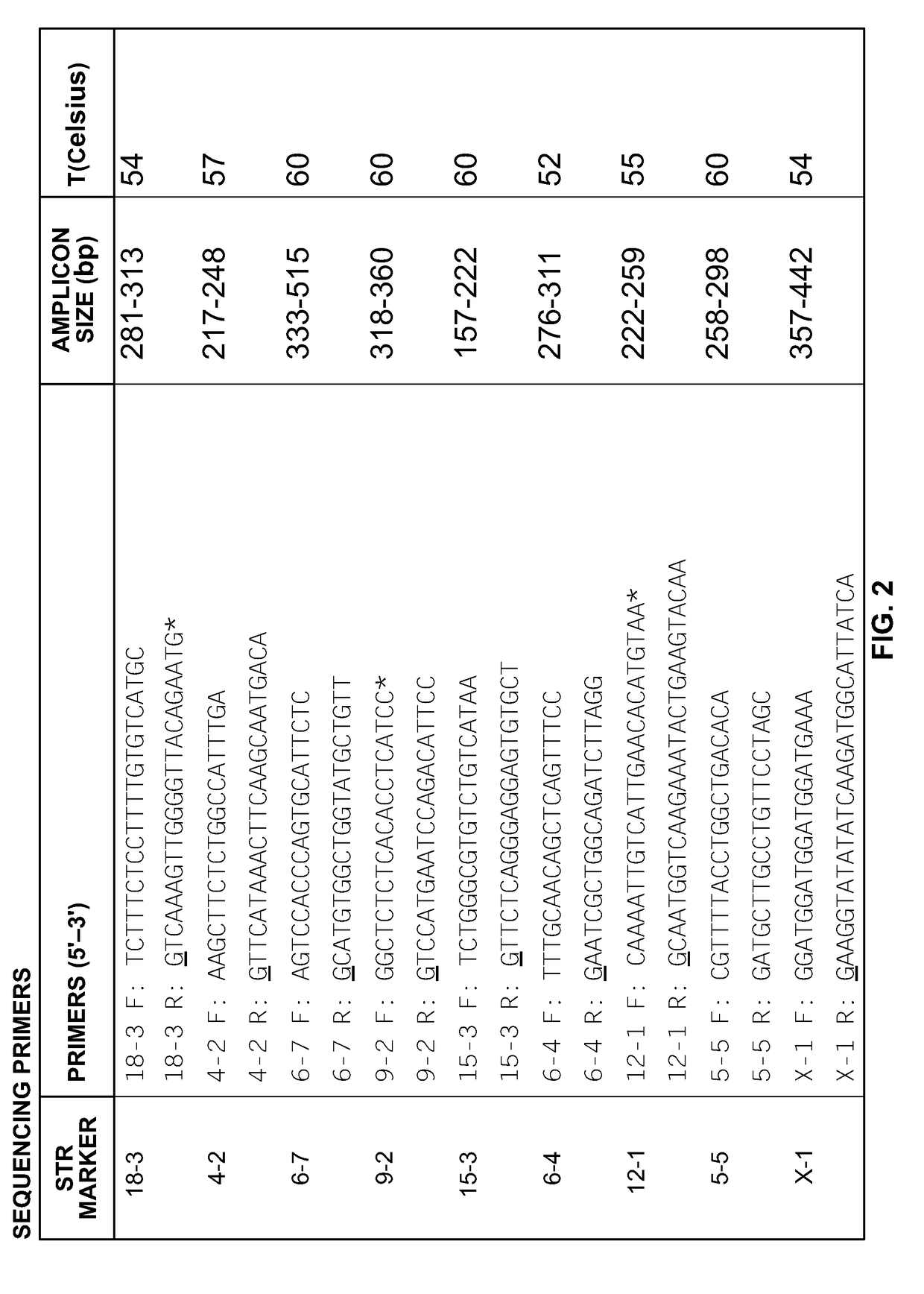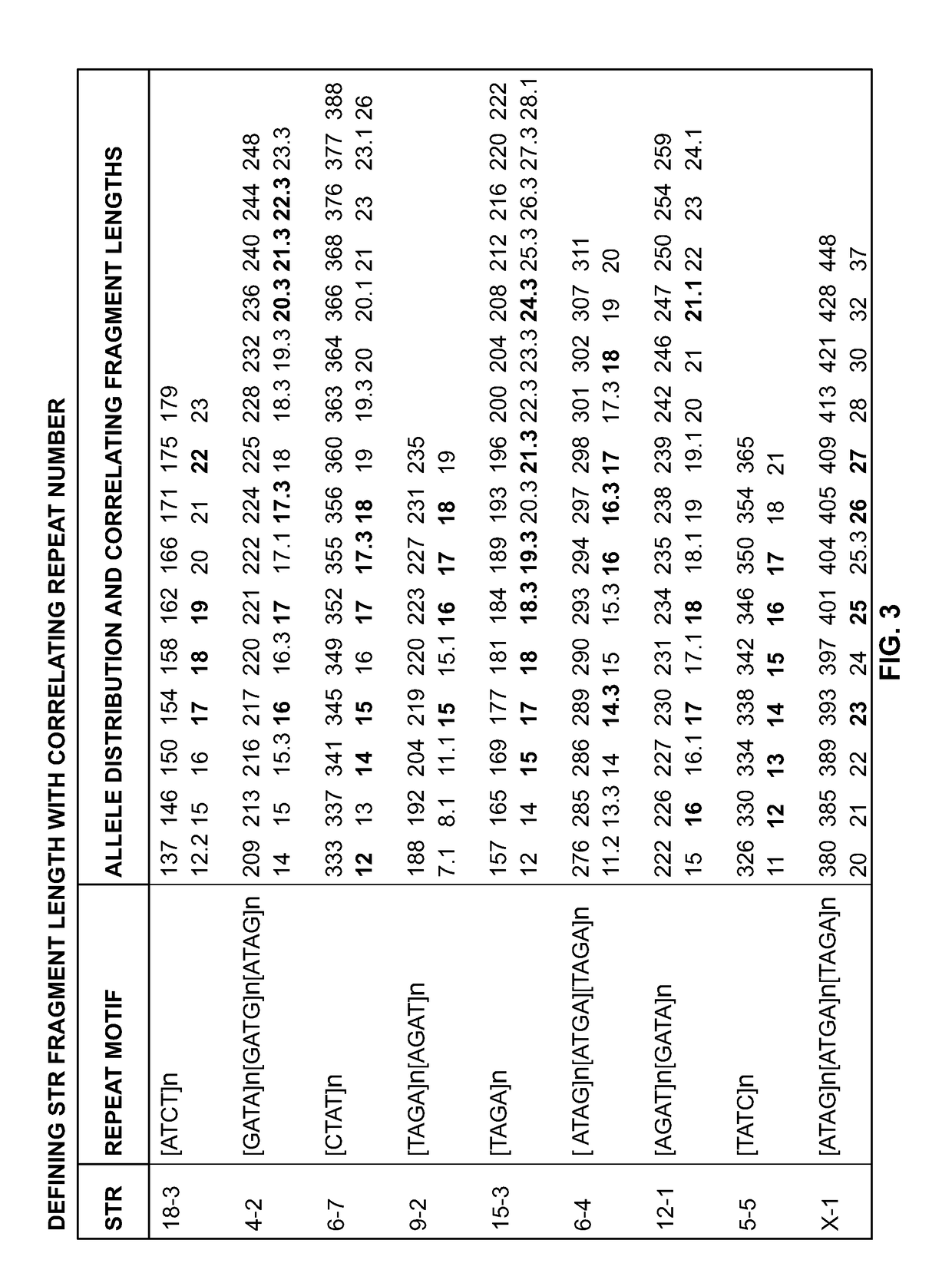Mouse cell line authentication
a mouse and cell line technology, applied in the field of mouse cell line authentication, can solve the problems of noisy stuttering, difficult genotyping of strains, and insufficient method for nonhuman cell lines, and achieve the effect of high passage number
- Summary
- Abstract
- Description
- Claims
- Application Information
AI Technical Summary
Benefits of technology
Problems solved by technology
Method used
Image
Examples
Embodiment Construction
[0069]The present disclosure relates to a method and kit for mouse cell line authentication. The method and kit disclosed herein target tetranucleotide repeats in the mouse genome including primers that amplify nine mouse short tandem repeat (STR) markers. Based on unique profiles obtained from seventy-two (72) mouse samples, the allele distribution for each short tandem repeat (STR) marker was determined. Correlations between allele fragment length and repeat number were confirmed with sequencing. The STR markers may be stable up to passage forty-five in L929 and NIH3T3 cell lines as there were no significant differences in fragment length in samples of low passage when compared to high passage samples. Primer sets for two human STR markers were incorporated into the multiplex method and kit to facilitate detection of human cell line contaminants. Adoption of this simple method and kit would provide assurance in cell line identity for researchers and cell repositories. The method a...
PUM
| Property | Measurement | Unit |
|---|---|---|
| temperatures | aaaaa | aaaaa |
| final volume | aaaaa | aaaaa |
| temperature | aaaaa | aaaaa |
Abstract
Description
Claims
Application Information
 Login to View More
Login to View More - R&D
- Intellectual Property
- Life Sciences
- Materials
- Tech Scout
- Unparalleled Data Quality
- Higher Quality Content
- 60% Fewer Hallucinations
Browse by: Latest US Patents, China's latest patents, Technical Efficacy Thesaurus, Application Domain, Technology Topic, Popular Technical Reports.
© 2025 PatSnap. All rights reserved.Legal|Privacy policy|Modern Slavery Act Transparency Statement|Sitemap|About US| Contact US: help@patsnap.com



